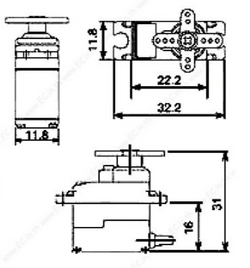SDSU Mechatronics
Submarine Thruster Simulation
The goal of this project was to design and build a compact and portable representation of the 2017/2018 Mechatronics submarine's thruster layout with already purchased TowerPro SG90 9G Mini servos. The purpose of this is to allow the electronics team to test code without running the submarine's thrusters, which need water for lubrication. The process of accomplishing this project followed three main steps: research and design requirements, brainstorming and concept design, and finally manufacturing. Through designing and manufacturing of the finished thruster simulator, I gained experience in the following skills:
-
Prototyping, designing, and tolerancing parts in SolidWorks
-
Giving parts the proper tolerance and dimensions to fit project requirements
-
Working with parts and assemblies to create a printable product
-
Assigning object materials to understand structural properties
-
-
Implementing a laser cutter by converting SolidWorks models into DXF files
-
3D printing designed parts using the Cura software and an Ultimaker 3 3D printer
-
Using manufacturing tools such as a laser cutter, 3D printer, power drill, etc.
-
Material engineering (Understanding which materials are fit for the task at hand).
-
PLA vs ABS for 3D Printing
-
Acrylic vs Wood for Laser Cutting
-
Models and images of the prototypes and final product can be found below.
 |  |
|---|---|
 |  |
 |  |
 |  |
 |  |
 |  |